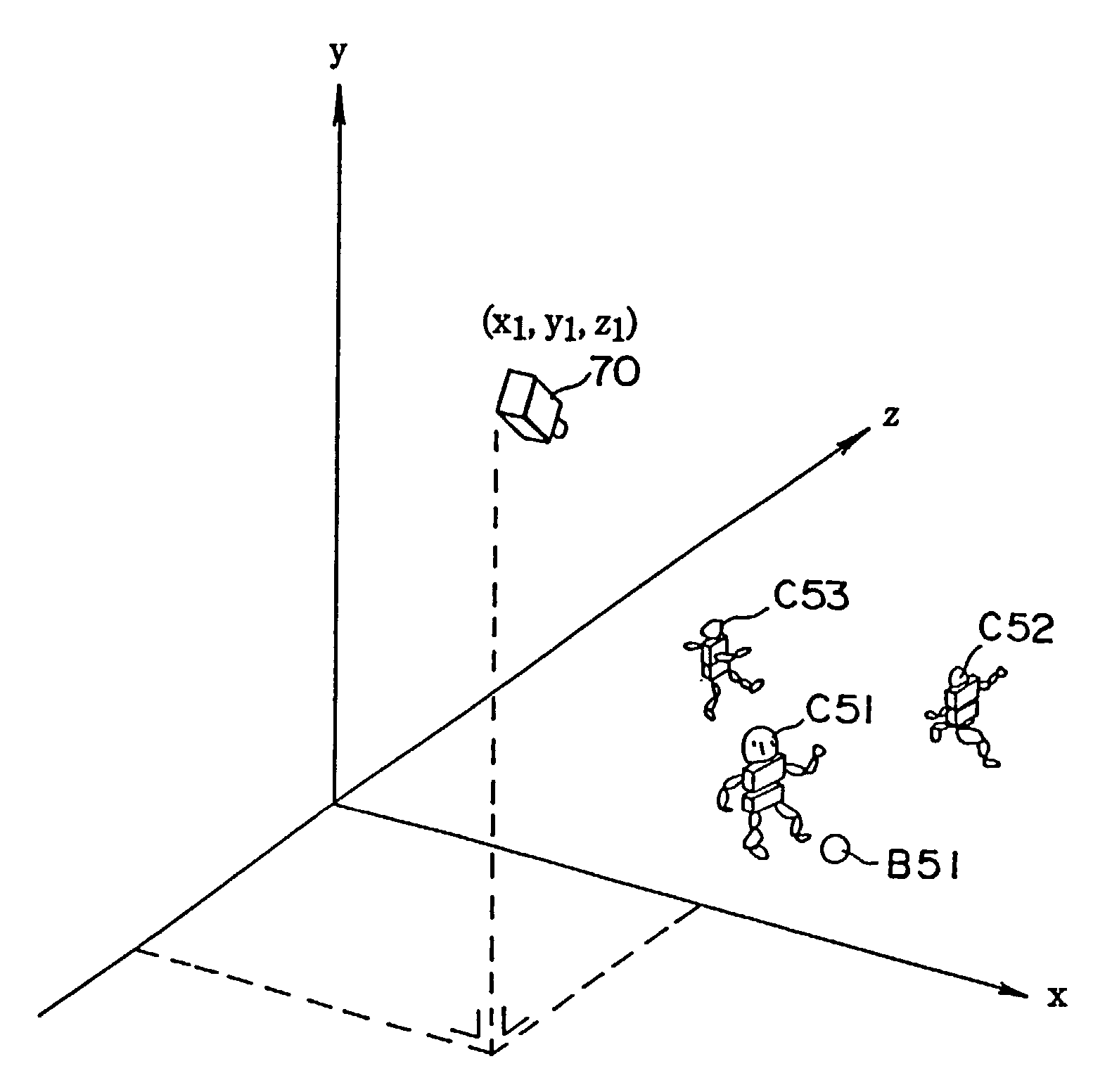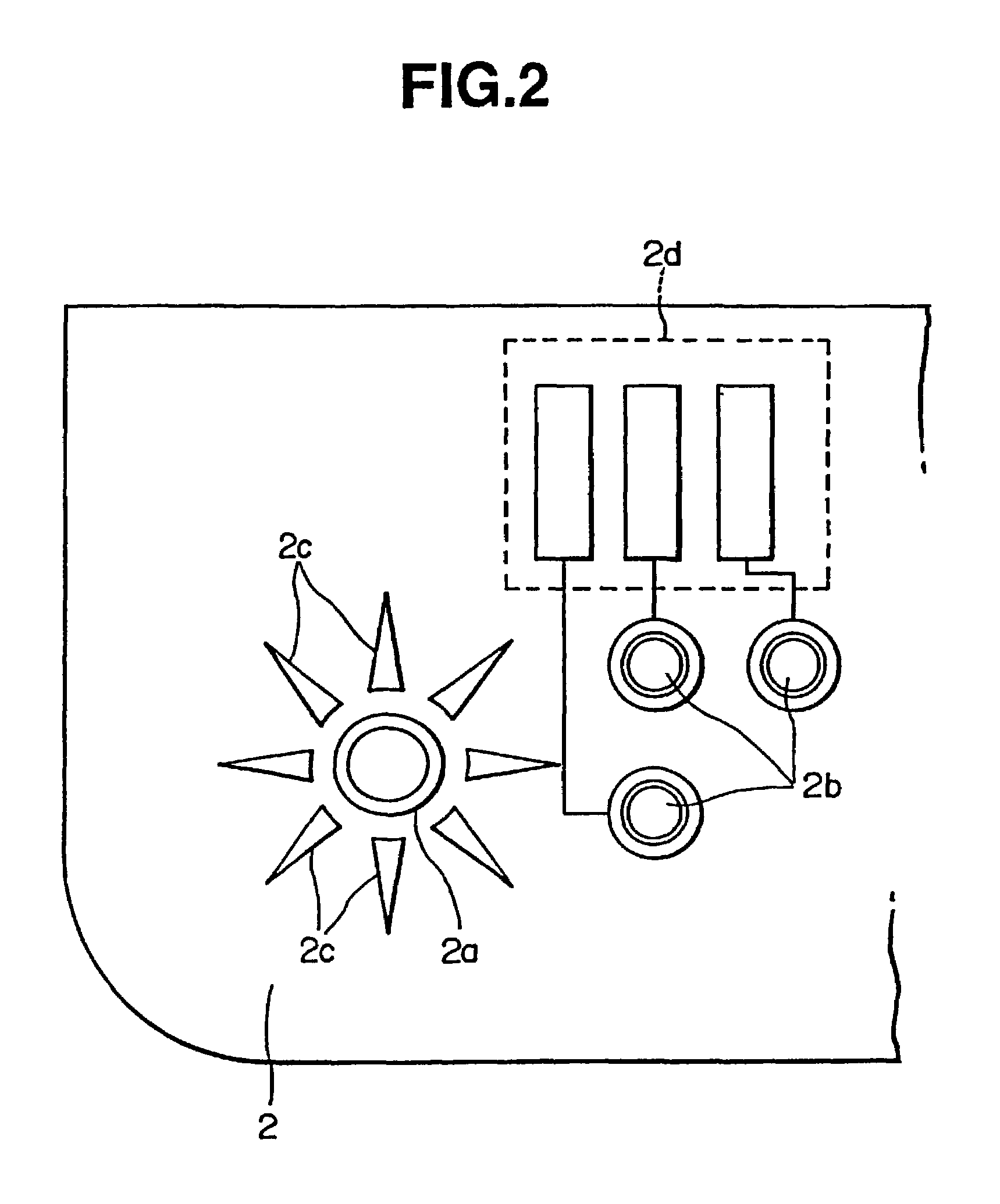Picture processing device, picture processing method, and game device and storage medium using the same
a picture processing device and picture processing technology, applied in the field of picture processing devices, picture processing methods, game devices and storage media using the same, can solve the problems of reducing the attention of game players, affecting the game's delicate taste, and reducing the number of polygons handled by the central processing unit (cpu), so as to achieve the effect of small computation load
- Summary
- Abstract
- Description
- Claims
- Application Information
AI Technical Summary
Benefits of technology
Problems solved by technology
Method used
Image
Examples
first embodiment
[First Embodiment]
[0174]The action of the polygon increasing means which is the first embodiment of the present invention is hereinafter described with reference to FIGS. 5 through 8. This embodiment defines a certain viewpoint and pictures as seen from this viewpoint is displayed. On the screen, display objects close to the viewpoint are displayed in a large size and display objects far away from the viewpoint are displayed in a small size. The display objects which are displayed in a large size, especially players, are expressed with a large number of polygons, and the display objects which are displayed in a small size, such as players, are usually expressed with a small number of polygons.
[0175]In such a display indication state, step S4 of FIG. 4 is shown in detail in FIG. 5.
[0176]In FIG. 5, CPU 101 first determines whether or not the polygon increasing means is necessary at step S41. If this processing is not necessary (step S41: NO), the processing of this first embodiment is...
second embodiment
[Second Embodiment]
[0204]In the second embodiment, when a character is a player of a soccer game, a predetermined portion of the player's back is hollowed out and this hollowed portion is filled with a ground, a uniform pattern and a player's number, all of which are respectively composed of polygons, in the order listed above. In this embodiment, polygon applying means executes this action.
[0205]The polygon applying means operates at step S5 of the main routine shown in FIG. 4. Details of this step S5 are described in FIG. 10.
[0206]According to FIG. 10, at step S501, CPU 101 of the main game device 10 reads out polygon data of player C21 which is composed of a plurality of polygons in a manner such that a part C21b of the back C21a of player C21 is hollowed out as shown in FIG. 11. The back C21a of player C21 is composed of a plurality of polygons Pn1–Pn6. The read-out data do not contain polygon data corresponding to the portion C21b surrounded by polygons Pn1–Pn6. Accordingly, ba...
third embodiment
[Third Embodiment]
[0217]A third embodiment is designed to realize a sense of far and near by executing a brightness changing processing, thereby showing players displayed in foreground in bright colors and players displayed at the back (or far from a viewpoint) in dark colors on the display screen of the CRT-type display 1a. Whether a player is close to or far away from the viewpoint is determined on the basis of the number of polygons.
[0218]This brightness changing processing is executed at step S6 of the main flowchart in FIG. 4. Details of step S6 are shown in the flowchart of FIG. 12.
[0219]CPU 101 of the main game device 10 processes the flowchart of FIG. 12 and determines brightness of each player according to the number of its polygons.
[0220]At step S601, polygon data of a player (or character) to be displayed next are read out from the motion data ROM 111, etc.
[0221]Subsequently, at step S602, the read-out number of polygons composing the player is examined. Step S602 has the...
PUM
 Login to View More
Login to View More Abstract
Description
Claims
Application Information
 Login to View More
Login to View More - R&D
- Intellectual Property
- Life Sciences
- Materials
- Tech Scout
- Unparalleled Data Quality
- Higher Quality Content
- 60% Fewer Hallucinations
Browse by: Latest US Patents, China's latest patents, Technical Efficacy Thesaurus, Application Domain, Technology Topic, Popular Technical Reports.
© 2025 PatSnap. All rights reserved.Legal|Privacy policy|Modern Slavery Act Transparency Statement|Sitemap|About US| Contact US: help@patsnap.com



